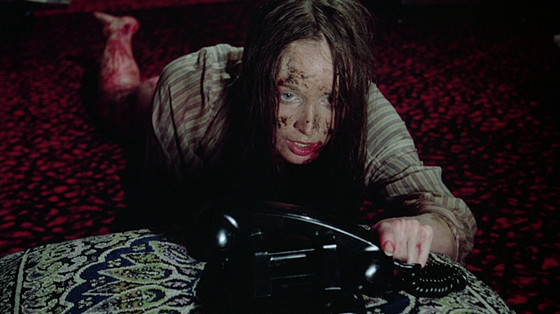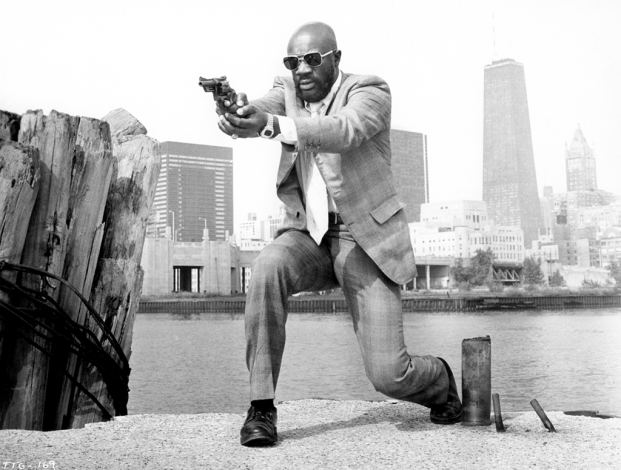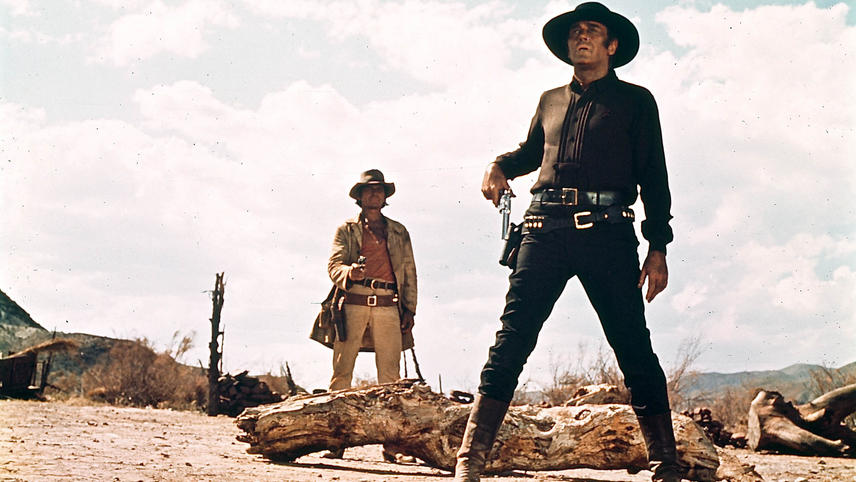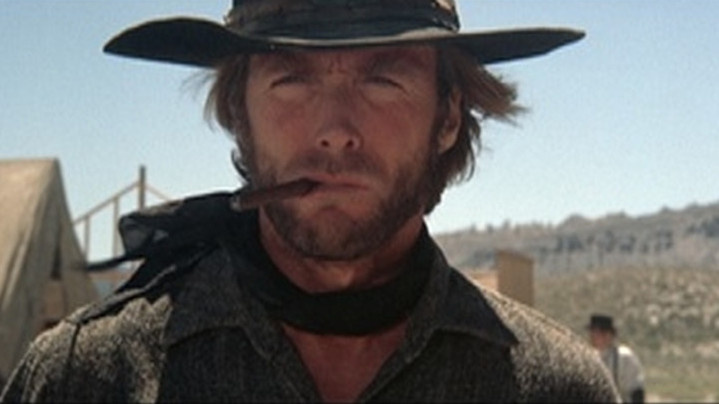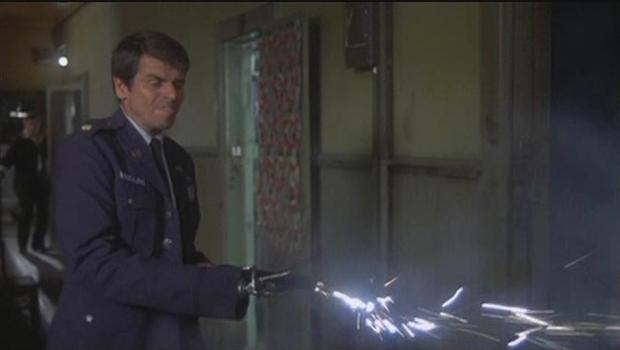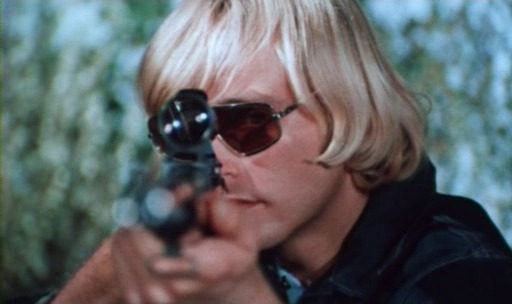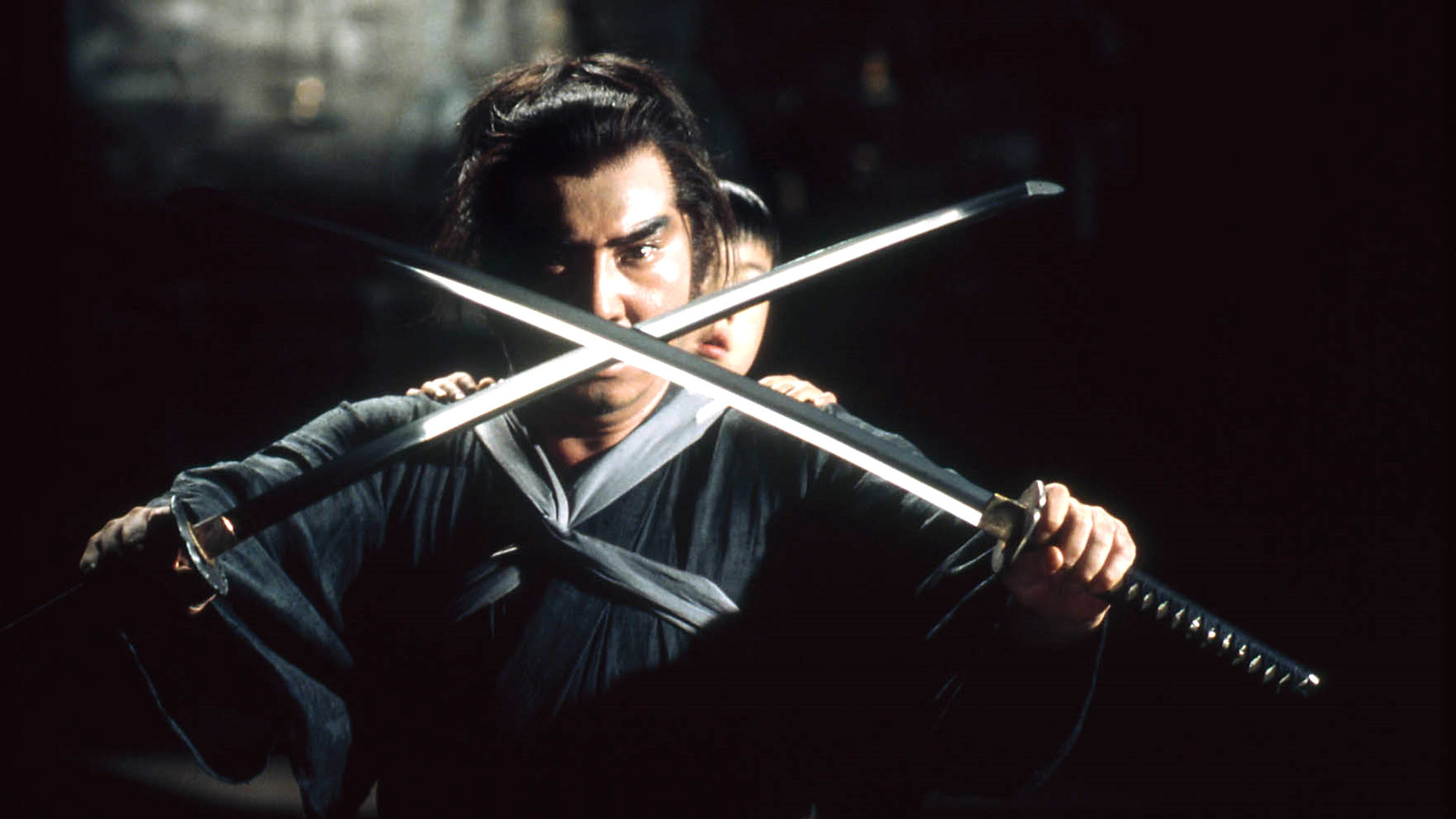17. I Spit on Your Grave (1978)
B. Ruby Rich cites Budd’s spitting on the Bride just before burying her alive as a visual pun referring to the most notorious rape-revenge film of all time – Meir Zarchi’s I Spit on Your Grave (1978).
While the rape-revenge film is a central exploitation subgenre and Kill Bill is embraced for its survey of vengeance-themed grindhouse cinema, it is often missed that the Bride’s figurative first step on her quest for vengeance is her attack on the would-be rapist who pays to have sex with her and the orderly/pimp who mistakenly believes she is still comatose.
Zarchi’s I Spit on Your Grave (originally titled Day of the Woman, and also released as The Rape and Revenge of Jennifer Hill and I Hate Your Guts) depicts the horrible gang rape and near murder of author Jennifer Hill (Camille Keaton) while she works in isolation in a Connecticut cottage. Hill survives and commits herself to killing the four men who assaulted her by first enticing, humiliating, and brutalizing each.
On its release, I Spit on Your Grave was subject to censorship and bans, and was labelled a “video nasty” in the UK. Roger Ebert infamously pilloried Zarchi’s film, calling it “a vile bag of garbage” and describing it as being “without a shred of artistic distinction” and lacking “even simple craftsmanship.”
Ebert claimed that there was “no possible motive for exhibiting it, other than the totally cynical hope that it might make money,” however this highly problematic film has found some reconsideration for its revolting portrayal of male dominance and its ferocious depiction of female vengeance.
18. Three Tough Guys (1974)
Duccio Tessari’s little known Three Tough Guys (1974), might be best remembered (if it’s remembered at all) for Isaac Hayes’s score, which features string arrangements performed by the Memphis Symphony Orchestra. Tarantino appropriates Hayes’s theme during the Bride’s first encounter with her kung fu master, Pai Mei. Its speedy high-hat, brassy flourishes, and funk/soul nastiness fits surprisingly well with QT’s homage to wuxia, those iconic whip zooms, and the old master’s deadly Eagle’s Claw technique.
Tessari’s titular Three Tough Guys unusually accounts for two heroes and a villain. Lino Ventura and Isaac Hayes star as Father Charlie and Lee Stevens, two men from different backgrounds each with a grudge against local kingpin Joe Snake (Fred “The Hammer” Williamson). Father Charlie searches for the killer of insurance investigator Gene Lombardo (Mario Erpichini), while Lee looks to redeem himself against the men and women who cost him his job as a police captain.
As the trailer says, together “the priest and the ex-cop are the toughest super-team in town,” throwing wild punches and high kicks on their way to confront Joe Snake. This American, French, and Italian co-production is something of a strange amalgam – a Eurocrime, Blaxploitation movie.
Three Tough Guys no doubt holds a special place for QT by its extensive footage of Chicago’s grindhouse district, full of bowling alleys, arcades, lots of local flavour roaming the streets, and movie marquees promoting alternately titled martial arts flicks like Triple Irons, a.k.a. The New One-Armed Swordsman (1971), and Seven Blows of the Dragon, a.k.a. The Water Margin (1972), both directed by Chang Cheh who appeared earlier on this list for Vengeance.
19. Carrie (1976)
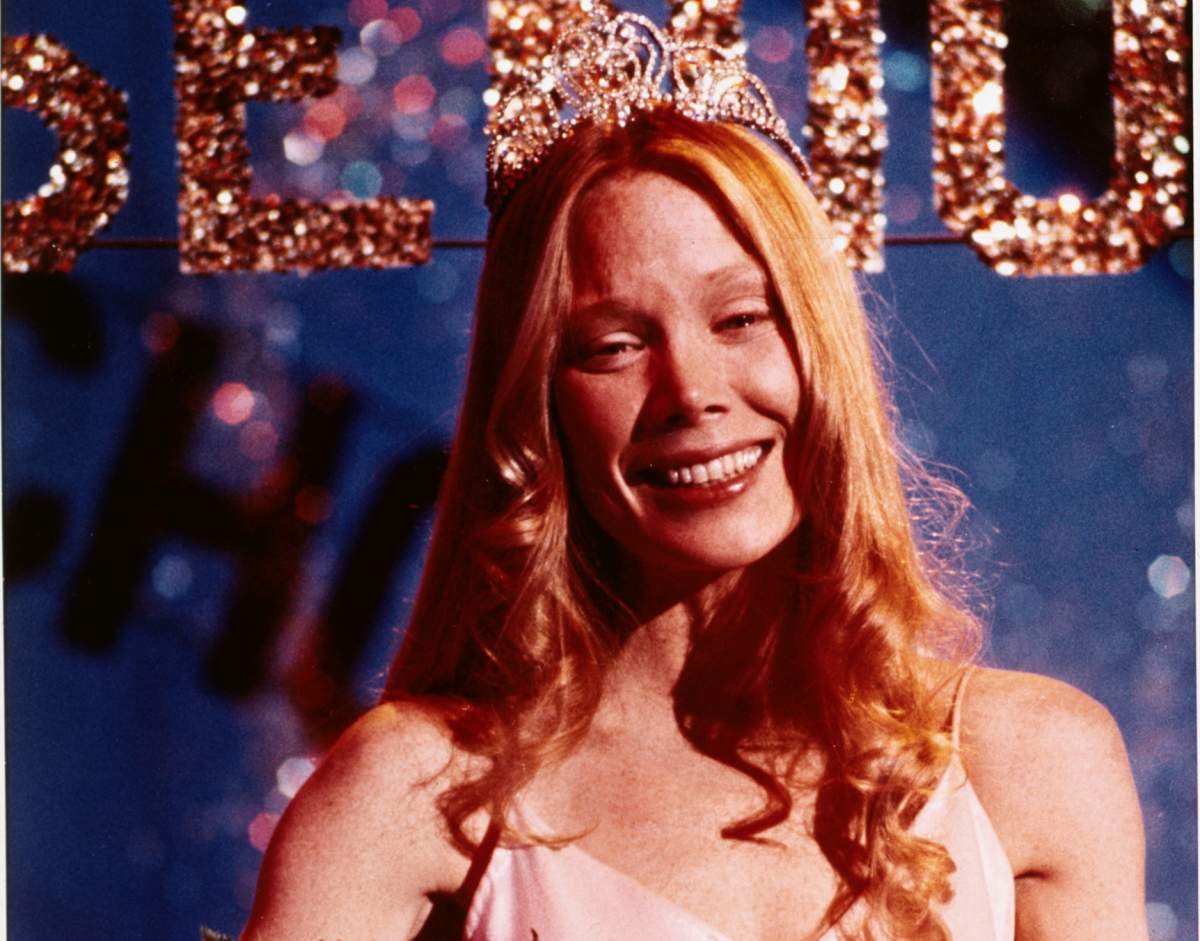
When the Bride resurfaces from “The lonely grave of Paul Schultz,” her hand and arm break through the soil, emulating the outstretched arm of Carrie White (Sissy Spacek) reaching out from beneath the earth at the conclusion of Brian De Palma’s Carrie (1976), the revenge story of a bullied and humiliated teenage girl with burgeoning telekinetic powers.
QT, an avowed fan of De Palma, also evokes Carrie by his use of split screen during Elle’s whistling entry into the hospital where the Bride lays comatose, replicating the divided image used during Carrie’s horrific high school prom and the decimation of her schoolmates.
De Palma’s adaptation of Stephen King’s novel was the first of the horror writer’s many stories and was widely praised at its release, garnering Oscar-nominations for Spacek as the title character and Piper Laurie as her oppressive, religious zealot of a mother.
Tarantino adores the film, placing it on his top ten list for Sight & Sound and likely motivating his interest in reviving the career of John Travolta, who plays the hoodlum boyfriend of Carrie’s worst tormentor. Carrie is a character-driven, horror masterpiece that balances the everyday trials of teenage life against otherworldly terrors that threaten to overcome Spacek’s character.
Fans of Vol. 2 will recall watching Uma Thurman pull herself from Paula Schultz’s grave, but those looking for some trivia will be interested to know that the arm that rises from the grave in Carrie does, in fact, belong to Spacek, who insisted on being buried under rocks and gravel to achieve the shot.
20. Once Upon a Time in the West (1968)
Having escaped from her premature burial, the Bride returns to Budd’s trailer on foot, walking through the desert in a distorted haze caused by the searing heat. As an admirer of Sergio Leone’s strong formalism and Ennio Morricone’s unconventional scores, it is likely that Tarantino draws this image from Leone’s epic, Hollywood-made Western, Once Upon a Time in the West (1968).
There, heat waves warp the view of Henry Fond, who was cast against type as the film’s cold-hearted villain. Like Kill Bill, Once Upon a Time in the West also features a wedding day massacre and an avenging bride. Claudia Cardinale stars as Jill, a former prostitute who arrives at her fiancé’s plot of land, Sweetwater, to discover that he and his children have been ruthlessly slaughtered by a hired gun (Henry Fonda) and his gang.
With the help of a mysterious harmonica player (Charles Bronson) and a notorious bandit (Jason Robards), Jill is able to protect her new home from Frank and the railroad interests that intimidate her and the family she never had.
Morricone’s Once Upon a Time in the West interestingly shares the intertextual ethic of Tarantino’s films with self-conscious references to Hollywood Western films including Duel in the Sun (King Vidor, 1946), High Noon (Fred Zinnemann, 1952), Shane (George Stevens, 1953), The Searchers (John Ford, 1956), 3:10 to Yuma (Delmer Daves, 1957), and The Last Sunset (Robert Aldrich, 1961).
21. High Plains Drifter (1973)
Of course, the image of a lone figure traversing the desert obscured by waves of heat may also refer to the opening image from Clint Eastwood’s High Plains Drifter (1973), where Eastwood’s unnamed avenger rides on horseback out of the scorching wilderness and into the passively corrupt mining town of Lago.
There, Eastwood’s Stranger sells his gun-slinging services to the townsfolk for unlimited authority over Lago and its residents. His task is to protect the town from three outlaws released from prison, but the Stranger has a personal stake in his assignment, being haunted by the memory of the town’s marshal being whipped to death by the outlaws while the community silently watched.
In preparation for the arrival of these killers, the stranger exposes Lago’s repressed ills and transforms them into something monstrous by having the town’s buildings painted bright red, turning its townspeople into gravediggers, and renaming it “Hell.” In the film’s climactic final confrontation, the Stranger has his revenge on outlaws and townsfolk alike before disappearing back in the distorted haze of the frontier.
The script for High Plains Drifter revealed the identity of the Stranger, but Eastwood’s anti-Western avoids any such explicit identification, lending him an air of otherworldliness. The Stranger may be just a man, or he may be a ghost, a spirit, or a devil sent to enact a dying man’s condemnation.
As such, High Plains Drifter reflects the darkness and paranoia of 1970s America’s corruption and complacency. The Bride, fresh from the grave of Paula Schultz and on her way through the desert’s hellish heat to battle Elle, evokes the Stranger’s supernatural power.
22. Rolling Thunder (1977)
It’s no secret that Quentin Tarantino treasures John Flynn’s Rolling Thunder (1977), going so far as to name his own VHS/DVD distribution label after this cult favourite and including it on his Sight & Sound Top Ten list.
Written by Paul Schrader and Heywood Gould, Rolling Thunder is a classic of the Vietnam vet avenger film. Major Charles Rane (William Devane) and Sergeant First Class Johnny Vohden (Tommy Lee Jones) return home to San Antonio after seven years as POWs. They are received as heroes and Rane is given a new Cadillac and $2,555 in silver dollars to commemorate his repatriation, but Rane’s stoic demeanor obviously reveals his discomfort with civilian life.
When home invaders murder Rane’s estranged wife and son and mutilate his right hand in the kitchen sink’s garbage disposal, Rane switches into cold-blooded combat mode, sharpening his newly acquired hook prosthetic and sawing off the barrels to a shotgun. He tracks down his targets with the help of a young groupie (Linda Hynes), and enlists Vohden to back him in the film’s Grand Guignol finale of gunpowder and blood.
Rolling Thunder was originally intended for release by 20th Century Fox, but was sold to American International after Fox, already uneasy with its extreme violence and grim attitude, held a notoriously disastrous test screening where offended audience members attacked studio personnel. AIP ensured Rolling Thunder’s grindhouse legacy by dumping the film into drive-ins and theatres that booked exploitation fare.
Kill Bill’s modest nod to Flynn’s film comes in Vol. 2 where the Bride visits Esteban Vihaio (Michael Parks). Vihaio runs Acuña, Mexico, with the help of the Acuña Boys, a gang of fatherless young men born from the women he pimps and who share their name with the villains from Rolling Thunder.
23. The Summertime Killer (1972)
Antonio Isasi-Isasmendi’s The Summertime Killer opens with young Ray Castor watching his father get killed by mobsters. Twenty years later, Castor (Christopher Mitchum) is a handsome, fair-haired man intent on eliminating his father’s murderers. Castor’s final target is mob boss Lazaro Alfredi (Raf Vallone), but Alfredi is warned of the plot by American Police Captain John Kiley (Karl Malden).
Kiley tracks Castor to Portugal, where Castor has kidnapped Alfredi’s daughter Tania (Olivia Hussey) in hopes of drawing out Alfredi. Castor succeeds in forcing a confrontation with Alfredi and his goons but his taste for vengeance is tempered by his love for his hostage, and Kiley discovers his resolve to capture Castor and save Tania is similarly compromised by the young couple’s devotion to each other.
This Eurocrime drama is serviceably effective for its genre. Mitchum is blonde, handsome, and frequently shirtless, Hussey is beautiful and innocent, and Malden does his best to enliven The Summertime Killer with some honest-to-goodness character.
The film even boasts some excellent stunt-driving and motorcycle-riding. Still, The Summertime Killer could be another easily forgotten crime film but for Luis Bacalov’s sought-after score. Tarantino employs Bacalov’s theme when the Bride enters Bill’s hacienda, ensuring that the best of The Summertime Killer lives on.
24. Shogun Assassin (1980)
Reunited with her daughter B.B., the Bride and B.B. ease into bedtime by watching Robert Houston’s Shogun Assassin (1980). Houston constructed his movie from the first two films of the Lone Wolf and Cub series, Lone Wolf and Cub: Sword of Vengeance (Kenji Misumi, 1972) and Lone Wolf and Cub: Baby Cart at the River Styx (Kenji Misumi, 1972), and the film was released into the grindhouse circuit by Roger Corman’s New World Pictures.
Shogun Assassin is the story of Ogami Itto, once the Shogun’s decapitator and now a wandering swordsman, and his son Diagoro. Together, they walk a path between life and death, seeking vengeance against the Shogun and his ninja for the murder of Ogami’s wife.
Ogami employs incomparable swordsmanship, masterful strategy, and a heavily armed baby carriage to ruthlessly destroy his enemies, making Shogun Assassin remarkable for its levels of violence and bloodshed. Kill Bill concludes with one final nod to Ogami Itto and Daigoro, stating after the Bride finally kills Bill that “the lioness is reunited with her cub.”
(Special thanks should be given to D K Holm’s Kill Bill: An Unofficial Casebook and Katherine Rife’s If You Like Quentin Tarantino …, both of which were valuable resources in the preparation of this list.)
Author Bio: RJ Tougas is a Canadian film fan with a Masters degree in Cinema Studies from Carleton University. His on theatricality in revenge cinema can be found in Stages of Reality: Theatricality in Cinema, published by the University of Toronto Press, and he can be read regularly at his blog, Make Mine Criterion!
